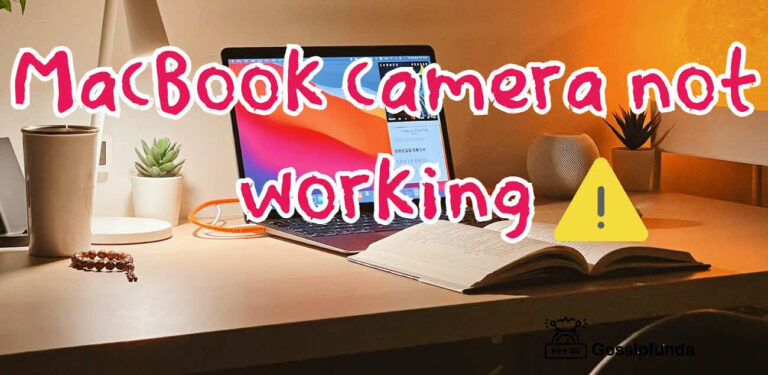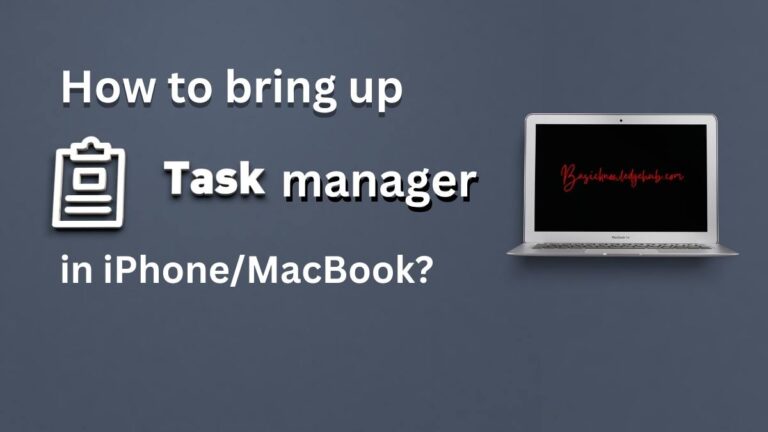MacBook Pro won’t turn on
Tired of your MacBook Pro not starting up? See how you can fix your MacBook Pro in under 15 minutes. Save a lot of money with some simple tricks. Learn what is causing the problem and why it occurred in the first place. See why you should not go to Apple Genius Bar without trying yourself. If you want to take a short way then watch the video on our YouTube channel.
Nothing is more frustrating than your MacBook giving up just you are to complete your work. There are several reasons why your MacBook Pro might not be turning on. In the guide, we will be covering various reasons and their solutions which range from a quick fix to in-depth fixes.
MacBook Pro won’t turn on Basic Guide
Before we can start with the guide there are some things you should make sure of:
- Check if the power cable is connected properly and is not lost or dust-covered.
- Check if the cable is broken or the internal wires are visible. Apple cables are infamous for their lack of durability. If you notice any damage to the cable then you should get a new one and try checking the MacBook again.
- Check if on pressing the power button you are not hearing the start-up sound, fan noise, display light up. Then it means that your MacBook is not starting up at all which is likely a physical problem.
- Try removing all the third-party accessories like printers, monitors, keyboards, etc; and start the MacBook again. Sometimes the third-party devices can cause this problem.
- If you have changed anything in the MacBook like a new RAM or new display then you should visit the center from where you got it installed. Apple is notorious to stop its devices from working if it detects any unauthorized parts in the MacBook. A similar problem occurs with iPhones when repair outside.
If the MacBook is still not working then we will try our tricks to make the MacBook work again. If you know what is causing the problem then skip ahead to that step, it will save a lot of time.
Do not miss: MacBook camera not working
Performing a Power Cycle
It seems like a very obvious thing to do but it can be very surprising and can save a lot of effort. Check how to perform a power cycle for your respective device below:
MacBook (Intel-powered)
Try pressing and holding down the power key for 10 seconds and you should hear a squeak. This will start your MacBook forcefully and your problem should be solved.
But if this is not working then you should try other steps and see if they work for you.
Mac (desktop)
First, disconnect the power supply from the Mac and then leave it for about 10 seconds. Now plug it back again, press and hold the power button for 10 seconds. This hopefully will solve your problem of MacBook Pro won’t turn on, but if not then try other tricks.
MacBook (M1 powered)
Press and hold the power button for 10 seconds and you should be able to see the Loading start-up option. From there you can easily start your MacBook, choose Safe Mode from the menu.
If you are not able to see any menu or any physical sign, then you should try other tricks.
Checking the physical display
Firstly check if you have connected any external display, disconnect the external display if you have done so, now try powering on the MacBook.
But if not then you need to check if there is a start-up sound after pressing the power button then the problem is with the display of your MacBook. The best way to check if the screen is blank or not turning on is to check if it turns grey after power-up in a dark room.
If the display is black but you can hear sound then you need to visit the Apple genius bar and get it checked. But if the screen is grey then we should move to the next trick.
Booting up in the safe mode
Safe mode will limit the applications running on the MacBook and perform diagnostics, this can severalfix our problem. To perform boot-up in safe mode follow the steps mentioned below:
MacBooks (Intel-powered)
Power on the MacBook and hold the Shift Key while it’s booting up. You should be able to see the “Safe Mode” text on the top-right corner of the screen.
If the MacBook is still not powering on then you should move to the next trick.
MacBooks (M1 powered)
Press and hold the Power button for about 10 seconds, you should be able to see the start-up options.
Choose the start-up disk option and then press & hold the Shift Key. Click on Safe Mode and press continue, now release the Shift key. Now you should be able to see the “Safe Mode” text on the top-right corner of the screen.
NOTE: To check if the start-up is happening or now, you could use the Verbose mode. For Intel-powered MacBppks, press and hold the Shift + Command + V key, then you should be able to enter the safe mode. This will give you a message about the status of the Safe Mode.
If your MacBook is working fine in the safe mode, then it means that the problem is with one of the start-up items. To fix it go to: System Preferences -> Users & Groups -> Remove all the items.
Resetting NVRAM & PRAM
This is the memory that is used to store the data such as volume levels, brightness level which stays even after restarting your MacBook (persistent data). This data can be the reason for the problem and resetting it will not change any of the important settings on your MacBook. To reset the memory, follow the steps mentioned below:
For MacBooks (Intel-powered)
- Hold this kye combination: Command + Option (Alt) + P key + R key + Power key.
- Now keep holding the keys until the MacBook powers on. You should hear the sound, release the keys after it.
NOTE: The steps are the same for resetting the NVRAM.
For MacBooks (M1 powered)
AS of right now, there is no command to reset the NVRAM on the new M1 powered MacBook, but you should search on Google once for the command.
Resetting the SMC
SMC stands for “System Management Controller” and this step should be performed when none of the above tricks are working for you. This will reset the current version of the macOS, and you should back up your data before doing it.
NOTE: SMC is not present on the new M1 powered MacBooks and you can’t easily reset the SMC on them. Search on Google for a workaround but as of the writing of the article, there is no workaround. Check how to reset SMC for your respective devices below:
For MacBook (Intel-powered)
- Power off the MacBook, unplug, and then replug the power cable.
- Now press and hold this combination of keys: Shift + Ctrl + Option(Alt) + Power button.
- After pressing you should see a flicker on the power button, restart your MacBook after you see it.
For Mac (Desktop version)
- Power off your Mac and unplug it
- Press and hold the power button for 5 seconds and plug the cable back in again.
- Now power on your MacBook.
Running Disk Utility
If the MacBook is booting up but the MacOs is not loading up, then the problem is with the physical drive. Lucky for us, it can be solved in Recovery mode. Follow the steps mentioned below for your respective device:
For MacBooks (Intel-powered)
- Turn off the MacBook completely, and make sure it’s not responsive.
- Press and hold the power button for 7 seconds if it is not turned off.
- Now hold this combination of keys: Command + R key (while it is booting up), until you see the Apple logo.
- Once the MacBook gets in the Recovery mode, you can access the Utilities -> Disk Utility.
- Locate the drive where the MacOS is installed and click First Aid.
- Now the Disk Utility should be able to find any errors and repair them automatically. If it will ask you to give permission to solve the issueof MacBook Pro won’t turn on, click Repair Disk.
For MacBooks (M1 powered)
- Press and hold the power button until you see the start-up options.
- Once you see it, select Option -> Continue to enter recovery.
- Once the MacBook gets in the Recovery mode, you can access the Utilities -> Disk Utility.
- Locate the drive where the MacOS is installed and click First Aid.
- Now the Disk Utility should be able to find any errors and repair them automatically. If it will ask you to permit to solve the issues, click Repair Disk.
Checking file system
This step is going to be a little technical so follow the steps carefully and it will hopefully solve the issue. Follow the steps below to check the file system:
NOTE: This step is not for M1 MacBooks.
- Power off the MacBook and power it while holding Cmd + S key, this will launch the Single User Mode. Now you can release the keys when the black screen comes with the message in white text.
- Now wait for the command-line prompt and then you need to enter this command: “fsck -fy”, now press return.
- After some time you see 2 messages: “The volume appears to be OK” or “FILE SYSTEM WAS MODIFIED.”
- If you get “The volume appears to be OK”, then you should just reboot and press return.
- If you get “FILE SYSTEM WAS MODIFIED”, then you need to write this command: “fsck -fy” repeatedly and press return. (Pressing the UP key will give you the previous command, you will not need to write it, again and again, this way.)
Re-installing MacOS
This is the last thing that we can do to fix the issue, you should back up all your data and any information that you don’t want to lose. Reinstalling the MacOS is time-consuming and should be done when you have tried everything.
Follow the steps mentioned below to properly reinstall the macOS:
- Boot your MacBook in the recovery mode by pressing and holding the key combination:
Command + R key (for Intel-poweredpermitseveral fix)
The Power Button for 10 seconds (for M1 powered) - Now you should get in the recovery mode, click on Install latest OS, and follow the steps given on the screen.
- This will definitely fix the issue of the MacBook Pro won’t turn on.
Summary
In the article, we saw how we can identify the problem of the MacBook Pro won’t turn on and why it is occurring in the first place. But if you are not able to solve the problem when after trying all the steps then you should your MacBook to Apple’s genius bar and get it tested.
Any physical damage needs to be taken care of by professional as it can damage your entire MacBook. But if you know any outside repair shop that knows what they are doing then you should be fine.
NOTE: Be careful as Apple and other places can charge you a lot for a simple fix, always ask what changes they have made. And remove any personal data before handing your MacBook to anyone.


